
Dwight Peck's personal website
We flee South in the winter
Two weeks in Andalucia, December 2011
You may not find this terribly rewarding unless you're included here, so this is a good time for casual and random browsers to turn back before they get too caught up in the sweep and majesty of the proceedings and can't let go.
A brief three days in Sevilla (bis)

We've just done the Cathedral and we're wandering through the Barrio de Santa Cruz, the medieval Judería or Jewish Quarter, where the Jewish community lived under royal protection until Christians came along.

Charming old streets, presently an upscale neighborhood, and home of a formidable collection of rude T-shirts

Sevilla street scenes

Duck!

Ask not for whom the red carpet rolls out. It rolls out for thee.

Kristin lost in recollection of camel rides from the past, in Egypt, that ended less happily

The great square of the Plaza de la Encarnación, with the bold Metropol Parasol, completed earlier in 2011, soaring 26 metres overhead

Kristin, after a snack, preparing to confront the Encarnación

Vigilant mounted police keeping order

The Metropol Parasol, a German-designed wooden structure (called variously "the largest wooden structure in the world" and the "Encarnación's Mushrooms") that's got Roman and Moorish archaeological exhibits underground, the market square here, and scenic platforms with restaurants above.

Another camel caravan being fitted up for the pre-Christmas frolics
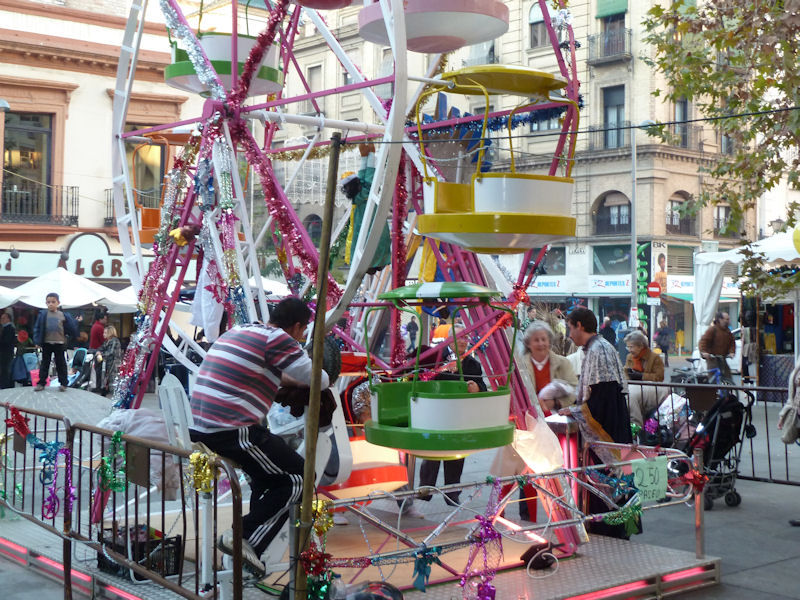
Guess who's propelling all the kids round the ferris wheel. Hint: note the young man on the exercise bike.

Metropol Parasol

Bouncy things for the kids. Tempting . . . . but, no.

I like the Metropol Parasol. Jürgen Mayer-Hermann is the architect, but "hats off" to the City Council for approving it, and to the citizens of Sevilla who routed themselves all round their main square during the 5-6 years of its construction.

The sidewalk café lifestyle, irrepressible, two days before Christmas

Back to the hotel: tomorrow's another day.

Mounted police watching out for criminal acts whilst waiting for the city pooper-scoopers to come along and tidy up a bit.

A distraught lady in the Salvador church. But Spain has a robust safety net, and she can always pawn that crown.
"Subida besapie" sounds too awkward to translate ('ascension kiss'?). It's apparently got to do with a traditional 9th of April procession involving the cult of the Hermandad de la Mortaja, or Fraternity of the Sacred Shroud. Or perhaps not.

A famous retable showing, as it mought be, Santa Justa and Ruffina, Seville's martyred patron saints, and below them the head (or "cabeza"; our word "cabbage"?) of Simon of Cyrene. The socially appropriate behavior at this point is to venerate them, express one's renewed sense of spiritual vigor, and pass it on to your Facebook friends.

That's the Christ of Humility and Patience, commissioned by the Glovemakers Guild in 1696. We can certainly sympathize!
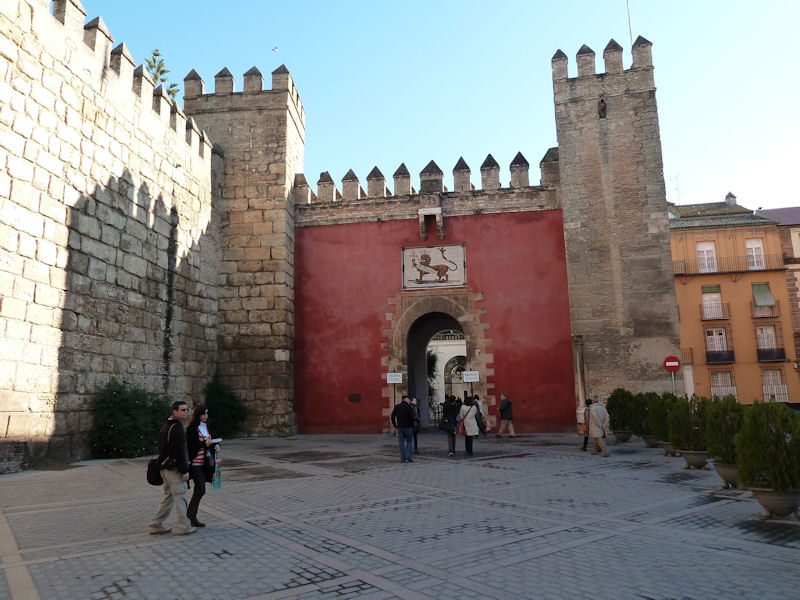
The Real Alcázar. We are ready! Let's see what Pedro I, "the Cruel", and his Mudéjar masons from Granada have got for us here.

That's pretty good, right there; it could do with a good wash-up, though.
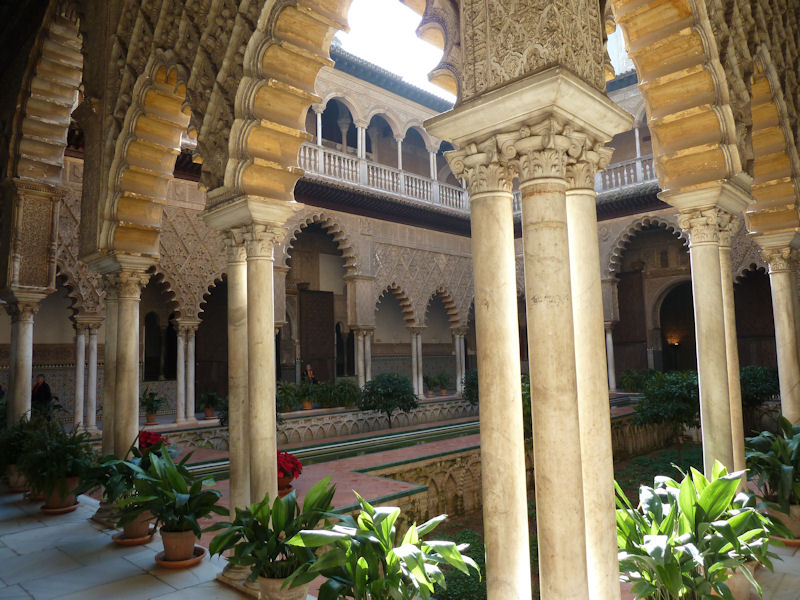
I've tried to reconstruct this place for the photo captions, but it's impossible, it's a maze. This is probably the Patio de las Doncellas, "Court of the Maidens", you don't want to ask why.

The Patio de las Doncellas (as far as I know)

Inside Pedro's palace

I give up. I took notes on the photos, but in the end, though sublime etc., they tend to look the same.
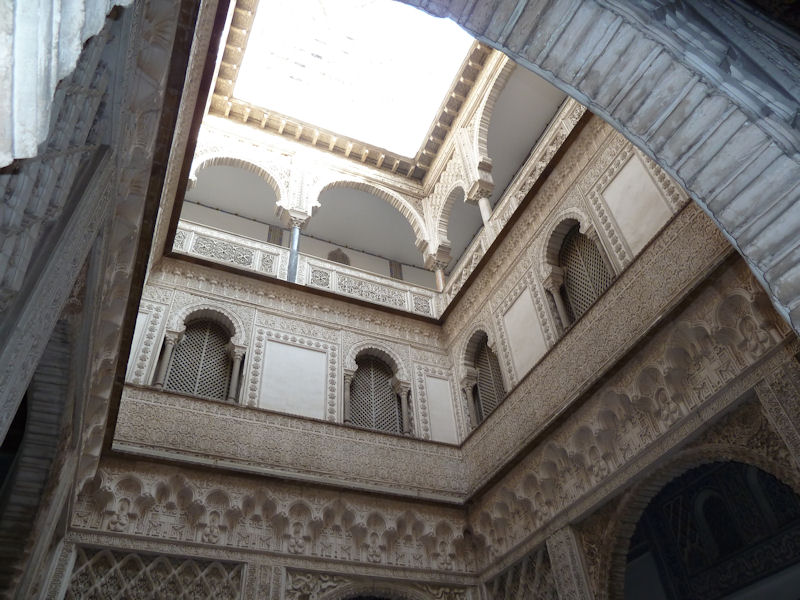
A Mudéjar skylight
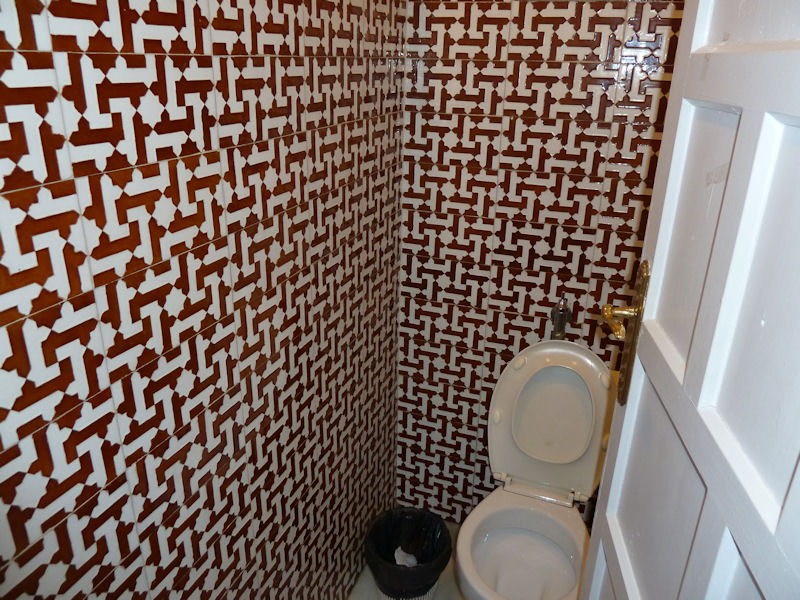
Great tile work in the Alcázar

Out the back, in the gardens, Mercury's pool

The gallery of the grotesque

The pool again

From out in the gardens (which comprise 80% of the Alcázar), a view of the palace and the Giralda behind it

More gardens. Fantastic, if you like gardens.

The Giralda over the gardens. An expensive cup of coffee americano in the little cafeteria, and we're out on the street.
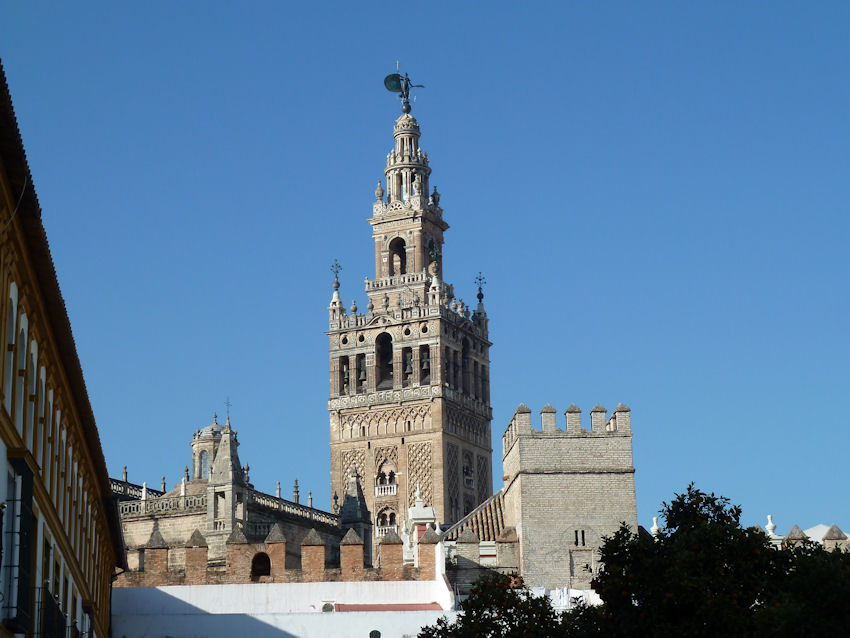
Staring at the Giralda again. You can't not.

In the huge Parque de María Luisa, this is the Plaza de España, with boats that can be hired to row yourself peacefully back and forth in front of it, and round by the front door.

Rowboats awaiting you
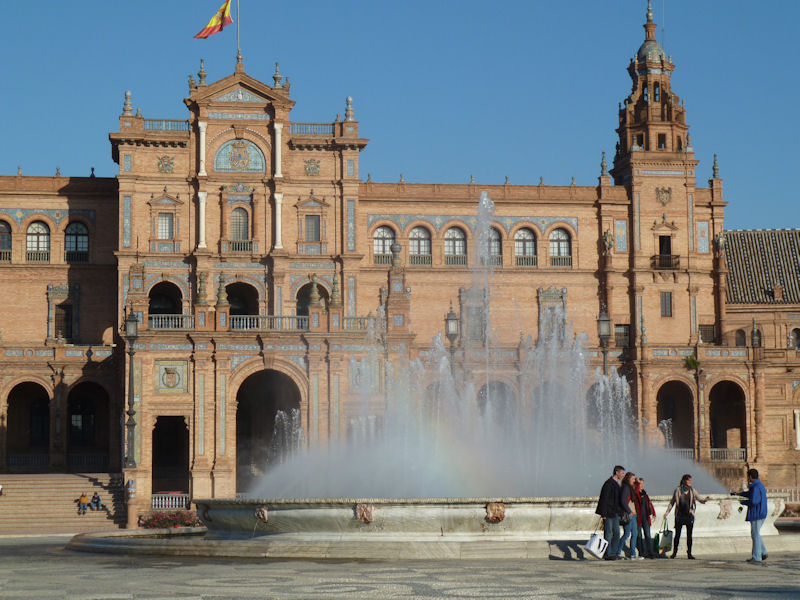
The fountain in the Plaza of Spain, tentative transactions about to take place over on the right

Mounted police on patrol in the María Luisa Park

The mothership

What city doesn't have its Dante?!?

The Mudéjar Pavilion (or Pabellón Mudéjar, as the locals would have it), now home to the Museum of Popular Arts and Customs, in the Plaza de América.

Here's what we've come for: the Archaeology Museum (that's the same pool, turned round the other way). This will be fun.

The archaeological museum, free or nearly so, traces early cultures from the Paleo- and Neolithic, Bronze Age, Tartessian Iberian peoples from the mid-first millennium BC (who traded tin and other metals with Greeks, Carthaginians, everybody in fact), Romans, and the Moors of al-Andalus or Andalucia.

The boys have been let out for a Night on the Town. That's Bacchus in the middle, always ready for a little fun.
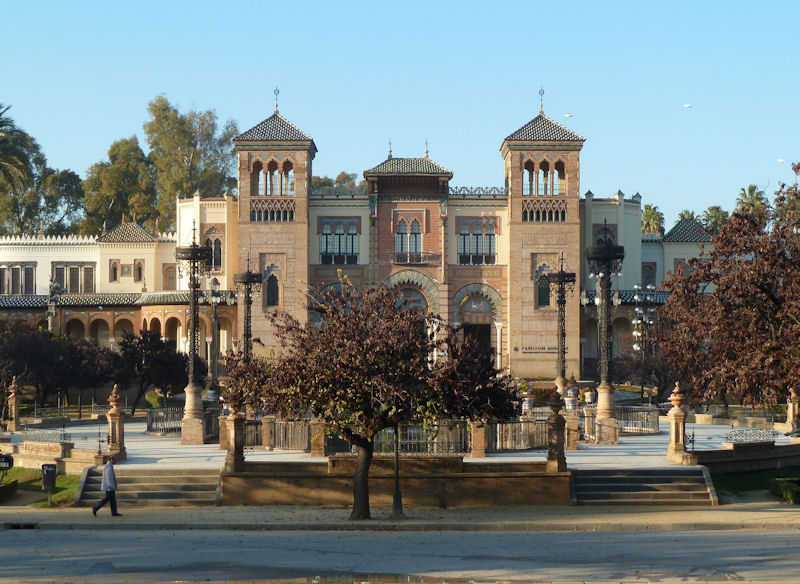
The Mudéjar Pavilion again
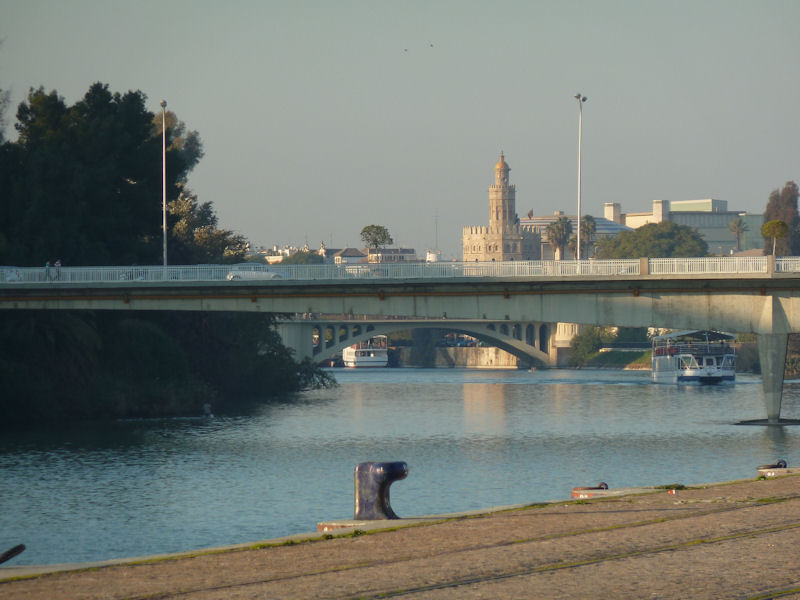
The river Guadalquivir, with the Torre del Oro in the centre

The SS Surfing has got turned the wrong way about in the river

The Torre del Oro, or Gold Tower, with 12 sides on it, was one of a line of city fortifications built by the Almohads in about 1220, home to the huge chain that was strung across the river to the suburb of Triana when ships tried to come up the Guadalquivir with mischievous intent.

Now it houses a very good maritime museum and a great view over the city.

Like this view, looking downriver

And this one: the Cathedral of Sevilla in afternoon sunlight

And the flag of Spain (backwards, actually)
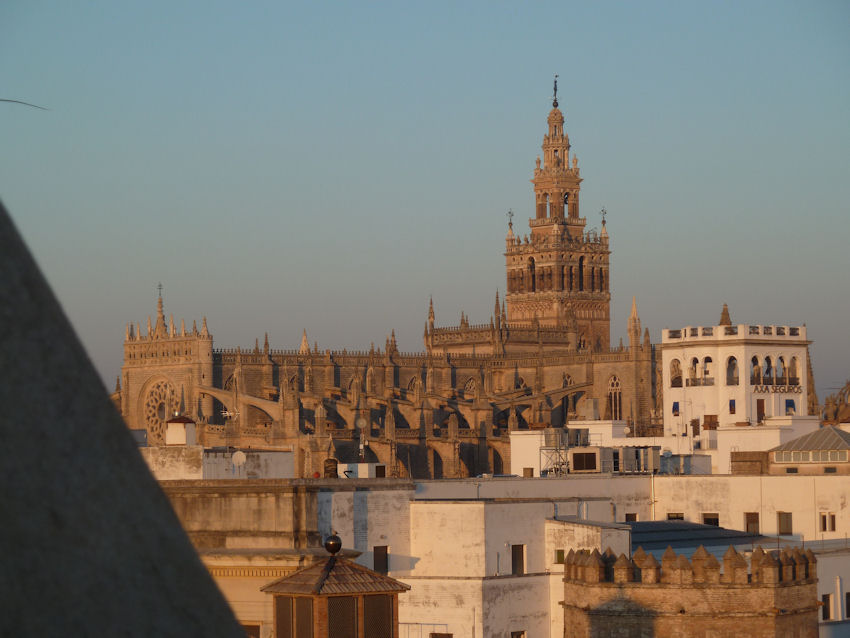
And the Cathedral again, as the sun sets and we're thinking about dinner

A jam session on the riverbank
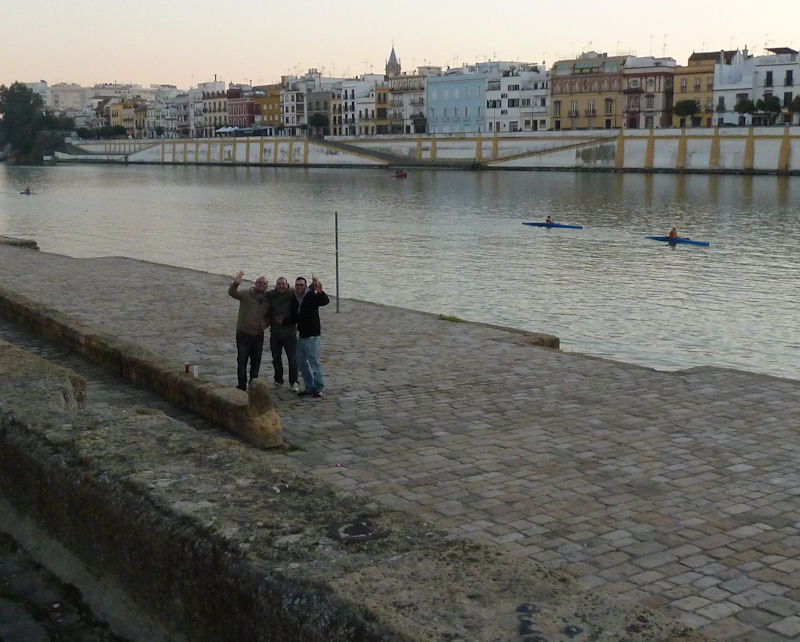
Let's raise a toast!
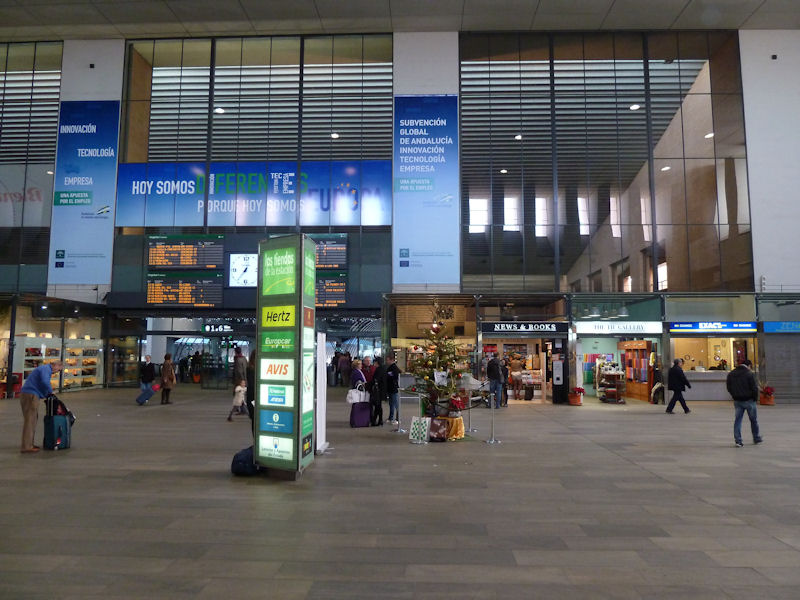
Train station! We've missed most of what's to be seen in Sevilla, but we got in a couple of the touristical biggies, and we ate a lot of great tapas. It was wonderful.
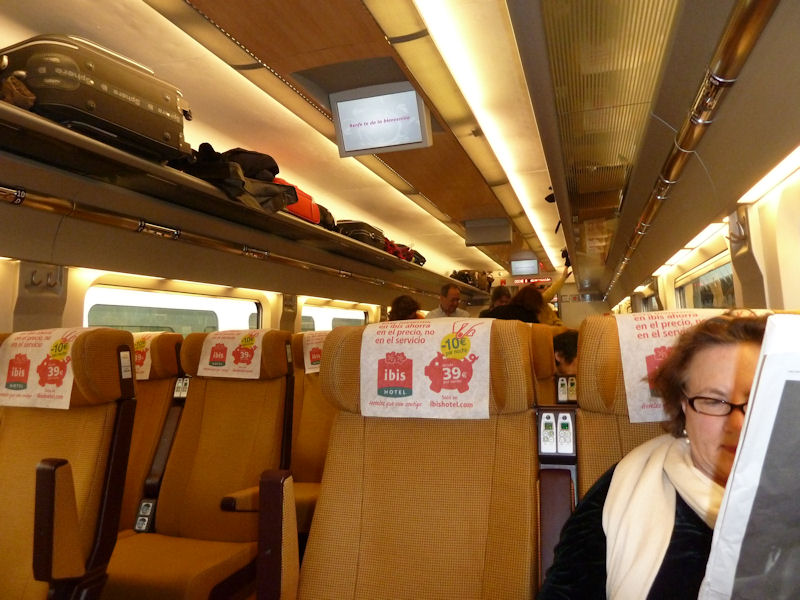
And this is cool, too: a superspeed train from Sevilla through Córdoba direct to Madrid, probably faster, and certainly more comfortable, than the airlines could have done it.

In Madrid airport, we're waiting in the Rich People's Lounge (with free salted peanuts and potato chips, and Internet over an old ethernet cable). Kristin's got some kind of card that got us in -- my first time in an airport mixing right in amongst the Rich People in their Lounge (in this case, though, just Kristin and the waitress refilling the salted peanuts bowl).
Postscript
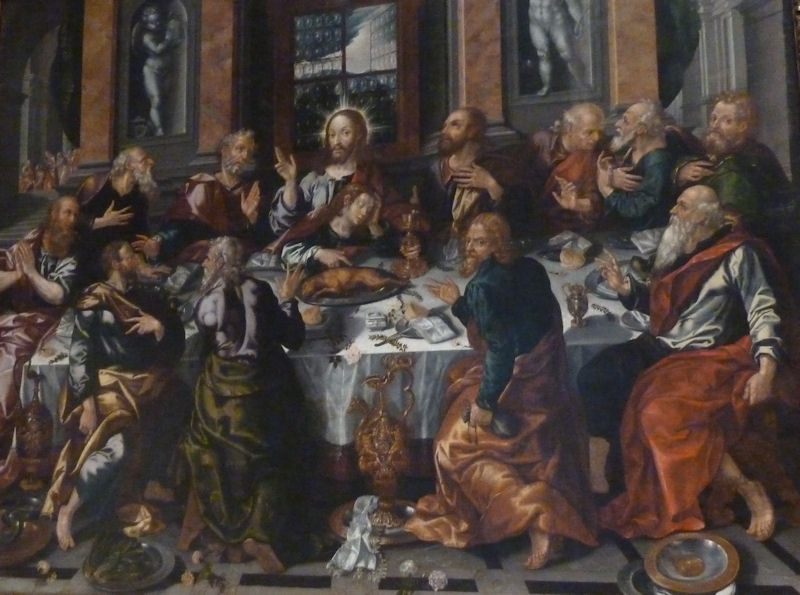
As indicated in the previous page, in the famous Alonso Vazquez Last Supper, the rat's bigger
(1588-1603, Seville's Museo de Bellas Artes)

 Feedback
and suggestions are welcome if positive, resented if negative, Feedback
and suggestions are welcome if positive, resented if negative,  .
All rights reserved, all wrongs avenged. Posted 6 February 2012. .
All rights reserved, all wrongs avenged. Posted 6 February 2012.
|





























































